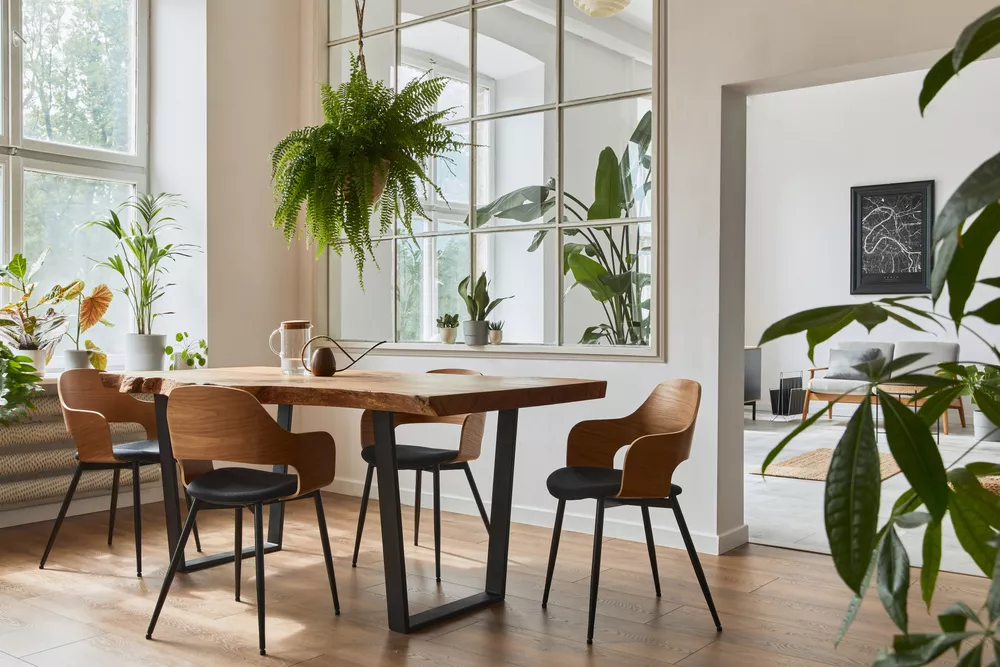Did you know that minimalism may reduce stress levels? While the idea of becoming “minimal” doesn’t appeal to everyone, those who long for a more simple home aesthetic should consider giving it a try.
There are so many different types of minimalist interior design. One Japanese-inspired one is Japandi style.
But how can you incorporate Japandi style into your home? Let’s talk about it. Read on to learn more.
Minimize
This is the most crucial (and often the most difficult) part of switching to a Japandi aesthetic. You’re going to have to change your perspective on what makes a house feel “homey” unless you are already a minimalist to start with.
Japandi replies on simplicity. While you can lead a simple and minimalist lifestyle with a lot of belongings, it’s far more difficult. It’s a better practice to remove everything that you no longer need and start fresh.
For items that you need to keep, make sure you have plenty of hidden storage areas. You can fit things inside ottomans, in closets, and even underneath furniture if you’re careful.
For everything that won’t fit, either get rid of it completely or consider renting a storage unit if you’re a maximalist at heart who still loves Japandi decor.
If you choose to minimize, we recommend using something like the Konmari method to get rid of old belongings. If something doesn’t spark joy or serve a purpose in your life, consider whether or not you actually need it that much.
Many people find that after minimizing and simplifying their decor, they feel more relaxed. It may be the best part of switching to the Japandi aesthetic.
Focus on Clean Lines and Shapes
When you have less to look at, clean lines and shapes, make a larger impact. Make them count.
Both straight lines and curves have a place in Japandi-style interior design. However, you should try to be consistent.
Horizontal lines should match with horizontal lines. Vertical lines should match with vertical lines. Don’t mix up too many different types of lines or curves in the same space or it may look overwhelming.
Remember: the goal is to have a clean and tidy appearance. Use lines and shapes to emphasize that rather than distract from it. They should look natural.
Get Low
Because Japandi style comes from Japan, you may want to incorporate more traditional aspects of Japanese interior design. For example, consider keeping some items closer to the ground.
For a Japandi bedroom, you don’t have to sleep on a traditional futon (though those are nice), but a low-profile option (like a Japanese platform bed) will fit the aesthetic better than a traditional taller bed or something more extravagant like a canopy bed.
Low tables and floor cushions in place of a dining table, a low desk for you to do your work while sitting on the floor, and even a comfortable kotatsu all make great additions to a Japandi-style home if you’re opting for a more traditional look.
Use Natural (and Eco-Friendly) Materials
While there’s room for artificial materials in a Japandi-style home, you should try to use as many natural materials as possible.
Opt for wood when it’s an option (and, if possible, use real wood). Wood floors, natural wood tables, and wood accents look fantastic in the simplicity of a Japandi home.
Fabrics should be sustainable and natural. You don’t have to replace all of your old fabrics, but whenever you buy a new piece, opt for something eco-friendly.
Bamboo may be the best choice for a material in a Japandi home. It has so many potential uses and it’s incredibly sustainable because it’s so easy to grow. If you can make the switch to bamboo items, now is the best time to do so.
Incorporate Greenery
Speaking of incorporating natural things, take advantage of the natural beauty of plants by decorating your home with them.
Indoor gardening is fashionable right now, and luckily, that works well with the Japandi aesthetic. You can even have rooms full of plants despite the fact that it doesn’t look “minimal.” That said, a minimalist look is still preferable and easier to manage.
We recommend having one or two large statement plants and then many smaller plants, like succulents.
Use Neutral Tones
You will rarely find bright and bold colors in a Japandi-style home. Stick with white, cream, and brown. You should focus mostly on light tones and use darker tones as accents.
Neutral tones feel natural and soothing. You will still have color from your plants, so the home won’t be completely monochrome.
If you must incorporate other colors, use softer colors like light green and soft pink. Use them as accents.
Avoid Clutter
In a minimalist home, clutter shows up right away. There’s no hiding it. If you want to display the Japandi aesthetic, you need to avoid clutter.
Make sure everything has a place. You should also keep easy and subtle storage containers anywhere that you know clutter will show up. This way, it’s easy to hide the clutter and put things where they belong.
For example, if you have a table near your entryway where keys and mail tend to accumulate, keep a small box or drawer there for those things to go in until you’re able to deal with them.
Is Japandi Style Right for Your Home?
This minimalist Japandi style isn’t for everyone, but if you love simple shapes, neutral colors, and a relaxing atmosphere, it might be right for you.
Japandi is all about simplifying your environment. Use these tips to start creating a Japandi aesthetic in your home.
For more helpful articles about the top trending topics, visit the rest of our site.
